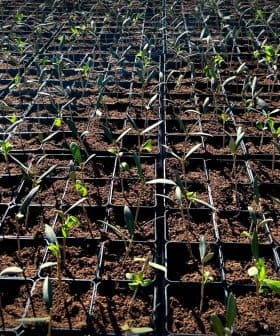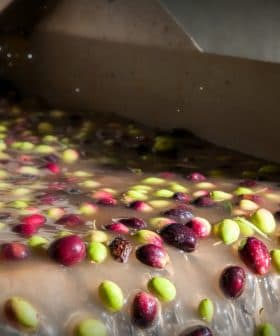Index Predicts Antioxidant Activity of EVOO
Phenolic compounds in extra virgin olive oil contribute to its taste, color, and bitterness, but are more recognized for their health benefits and antioxidant properties, which can help protect against diseases caused by oxidative damage. Researchers from the University of Basilicata and the University of Verona in Italy developed a predictive model using chemical indices to measure the antioxidant activity of EVOOs, allowing for the monitoring of high-quality olive oils during processing to ensure consumers receive products with known health benefits.
Although phenolic compounds are responsible for the bitterness, flavor and color of extra virgin olive oil, they are more renowned for their health benefits and antioxidant properties. Knowing the antioxidant activity of extra virgin olive oil could help predict its effectiveness as a protective agent against diseases such as coronary heart disease, stroke and some cancers that are caused by oxidative damage.
The antioxidant activity of commercially available olive oils varies because the variety of olives, the climate where they are grown, olive ripeness at time of harvest, and methods used for extraction of olive oil all play a role in the polyphenol content and chemical makeup of the oil.
In order to develop and validate an antioxidant activity predictive model for olive oil, researchers from the University of Basilicata and the University of Verona in Italy evaluated the antioxidant activity of EVOOs using chemical indices and investigated the relationship between the chemical parameters and antioxidant activity.
In the article, published in the journal Food Chemistry, researchers determined the antioxidant activity of 75 EVOOs from five different cultivars — Coratina, Leccino, Maiatica, Ogliarola del Vulture and Ogliarola del Bradano — produced in the Basilicata region in South Italy between 2011 ‑2012.
They evaluated the bitterness of olive oils using a simple index called the K225 value. This method measures the quantity of total phenols and compounds responsible for oil bitterness absorbed at 225 nm in a spectrophotometer. To measure the radical scavenging activity of olive oil, expressed as IC50, the researchers used the DPPH assay.
Based on results obtained from the testedextra virgin olive oil samples, the authors built a predictive model by relating K225 values to IC50 values and found that the antioxidant activity, expressed as IC50 values, could be predicted by using the K225 values.
The researchers further validated the predictive model by comparing measured antioxidant activity of 20 unknownextra virgin olive oil samples to the values of IC50 obtained using the predictive model. The authors concluded that the model using K225 values to calculate IC50 values could be used to predict the antioxidant activity of EVOOs.
The findings could offer a simple method to monitor the quality of EVOOs during processing so that high-quality extra virgin olive oil with known antioxidant activity reaches consumers.









